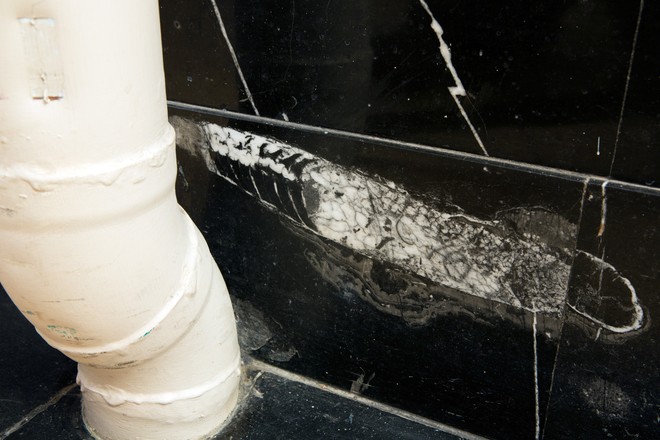
Nautiloid fossil
c400 million years ago
Set within the black marble skirting just to the right of the door leading into the Dixson room, under the fire extinguisher, is the oldest object in the library – a fossilised Orthoceras nautiloid which dates to the Silurian period of the Paleozoic era, approximately 400 million years ago. The name means ‘straight horn’ and refers to the long, straight conical shell. An ancestor of the modern squid, the Orthoceras nautiloid could grow up to 6 metres in length, and moved through the water backwards with air trapped inside its shell to keep it afloat.
From the 2500 known species of fossil nautiloids, only a handful of species survive today.


 Back to list
Back to list